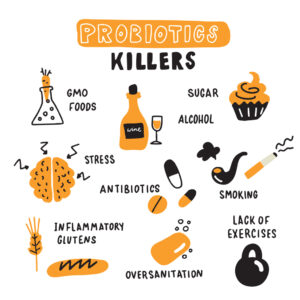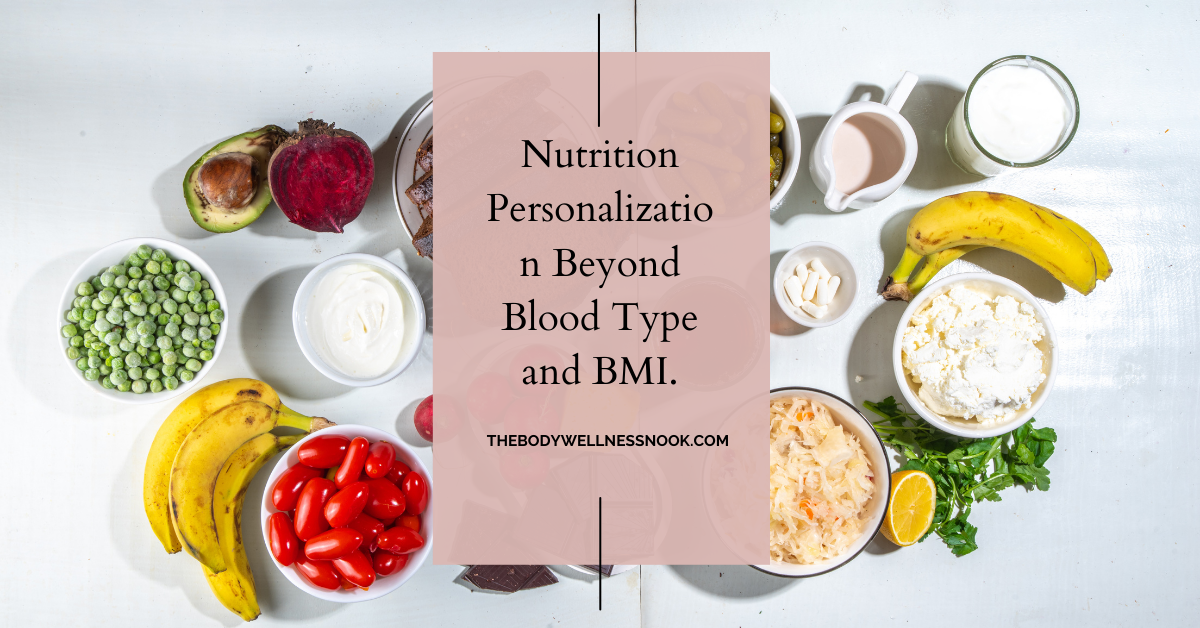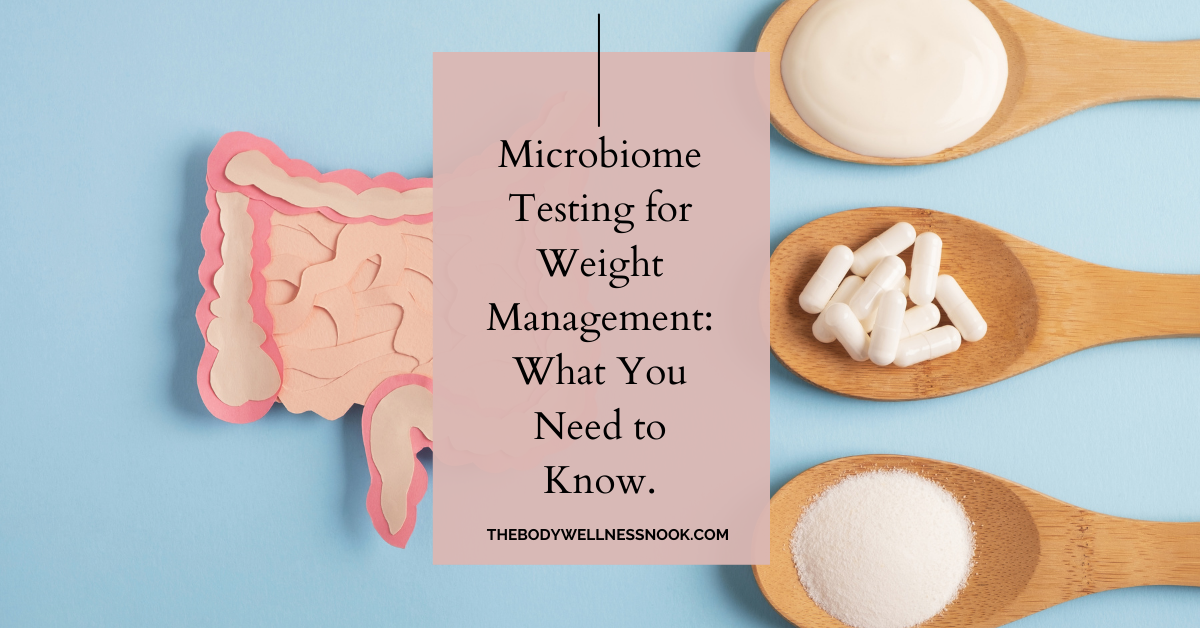Understanding Gut Microbiome
Importance of Gut Bacteria
My gut microbiome might as well be an alien landscape right under my nose. It’s a thriving mini-universe of critters like bacteria, fungi, viruses, and even some parasites, all swirling around inside me. This invisible crowd’s on duty 24/7, helping me break down my lunch, ward off villains (a.k.a. harmful bacteria), keep my immune system ready to rumble, and maybe even cheer me up on a cloudy day. Would you believe there are more bacterial tenants in my body than human cells? Yep, I’ve got about 40 trillion bacterial pals compared to a mere 30 trillion human cells (Healthline). Guess it’s safe to say I’m more bug than human!
Factors Influencing Microbiome Diversity
There’s a bunch of stuff that can shake things up in the scene in my belly. These tidbits can play a part in the variety and headcount of all the tiny lifeforms hanging out inside me:
- Diet: What I chow down on doesn’t just keep me satisfied but spruces up my microbiome. A mix filled with fiber, fruits, veggies, and those funky fermented goodies boosts variety.
- Chemical Exposures: Whether it’s from dinner or dinner plates, chemicals can mess with my microbiome’s vibe.
- Disease-Causing Organisms: Infection alert! These uninvited guests can cause chaos in my gut balance.
- Bowel Movement Regularity: Keeping things moving down there keeps the community healthy and happy.
- Environmental Toxins: Nasty toxins in my surroundings can seriously mess up the diverse social network in my gut.
- Medications: Antibiotics and other meds can whack my gut germs, reducing the variety show down there (Cleveland Clinic).
| Factor | Impact on Gut Party |
|---|---|
| Diet | Boosts or busts party mood |
| Chemical Exposures | Throws balance off-kilter |
| Disease-Causing Organisms | Crash the party |
| Bowel Movement Regularity | Keeps world spinning |
| Environmental Toxins | Mucks up diversity |
| Medications | Messes with the balance |
The gut party starts the day I show up in the world, with each new snack or sniff adding to the diversity down there. More variety with my microscopic friends usually signals good times for my health (Healthline). By playing it smart with what influences my microbiome, I can keep the peace in my belly, which is pretty darn important for feeling my best.
For the scoop on how my microbiome buddy affects me, browse our articles on gut microbiome health and microbiome lifestyle factors.
Role of Gut Microbiome
My gut microbiome—those tiny critters living in my belly—is like a hidden hero, secretly working to keep me ticking. It’s bonkers how much it impacts my health overall. Let’s dig into the nitty-gritty of this unseen power.
Functions in the Body
Who knew? My gut bacteria are working overtime, and they’re as vital as any body part! Here’s the scoop on how this tiny gang keeps me going:
- Digestive System: My gut bugs tackle the tough stuff, turning carbs, fibers, and proteins into nutrients my body can soak up. They do all the dirty work so I can stay energized and healthy.
- Immune System: These little guys train my immune soldiers to tell the good microbes from the bad germs, keeping me from getting sick all the time.
- Nervous System: Ever wonder why a gut feeling can be so spot-on? That’s the gut-brain axis at play. These microbes make serotonin and other mood lifters, keeping my head and heart in the right place.
- Endocrine System: Hormones are their business too. They help me manage stress and keep my metabolism running smooth.
Impact on Various Systems
These tiny titans aren’t just busy inside my gut—they’ve got their hands in all sorts of bodily cookie jars. Here’s how:
- Digestive Health: When balanced, my gut gang fights off tummy troublemakers like IBS and IBD, helping me feel good from the inside out.
- Immune Function: A diverse mix keeps my immune system just right—strong but not on overdrive. That means fewer sniffles and allergies for me.
- Neurological Health: Messing with these guys can lead to mood swings and other brain blues. Keeping them happy might just lift my spirits too.
- Endocrine System and Weight Management: If my gut gets out of whack, it can lead to extra pounds. But a happy tummy can help keep my weight in check and fend off pesky metabolic issues.
| Body System | Impact of Gut Microbiome |
|---|---|
| Digestive | Fights tummy troubles; ensures nutrient uptake |
| Immune | Balances the immune army; cuts autoimmune loads |
| Nervous | Boosts mood; connects gut feelings to headspace |
| Endocrine | Stays on top of hormones; fuels metabolism |
Realizing all this, I see how crucial my gut squad is in keeping me shipshape. Diving into foods and habits that nurture my microbiome could be my secret weapon for staying healthy. Want some pointers on sprucing up your own gut health? Swing by our guides on gut health tips and getting personal with your gut.
Microbiome Diversity
Significance of Diversity
So, you wanna know what’s happening in your gut? Well, it’s your friendly neighborhood bacteria calling the shots. When these little guys are diverse, you’re likely riding the wave of good health. A rich mix of gut bacteria can say a lot about your health, from keeping your belly quiet to gearing up your immune defenses. Ever heard of firmicutes and bacteroidetes? These two are like your gut’s health barometer (Clasado).
Having a gang of different microbes helps your body churn through food, soak up nutrients, and fend off pesky invaders. But it’s not just your tummy that benefits; your mood can get a boost too, all thanks to the gut-brain connection. Want to geek out more on how your gut chats with your brain? We’ve got just the perfect article here.
Check out this simple cheat sheet on how your daily habits can jazz up or bring down your gut’s vibe:
| Factor | How It Affects Diversity |
|---|---|
| High-fiber meals | Pump up the variety |
| Fermented munchies | Amp up diversity |
| Stress | Drags down variety |
| Low-fiber intake | Shrinks diversity |
Stanford’s brainiacs discovered that piling up on fermented munchies makes your gut party with more microbes and less inflammation flare-ups (Stanford Medicine).
Effects of Dysbiosis
Dysbiosis is a fancy word for when the bad bugs outnumber the helpful ones in your gut. When things get out of balance, trouble isn’t far behind. This microbial mess can mess with your insides big time.
Here’s the scoop when your gut’s out of whack:
- More inflammation acts like unwelcome visitors
- Your digestive tract turns into a drama queen with bloating and diarrhea
- Your mood gets hit with anxiety storms and depression clouds
- Bugs have an easier time invading, leaving you vulnerable
- Riskier business with obesity and diabetes lurking around the corner
Research points out that a less varied microbiome sets the stage for conditions like obesity and diabetes (Stanford Medicine).
Stress, junk food, and skipping out on exercise are like rolling out the welcome mat for dysbiosis. Western lifestyle flavors, especially low-fiber diets, can lessen the good microbes, affect your health, and even mess with the next generation’s gut guests (Clasado).
Want to keep your gut happy and diverse? Peek into our guide on microbiome optimization just for you.
Enhancing My Gut Health
If I’ve learned anything lately, it’s that having a well-rounded bunch of gut bugs is key to staying healthy. Two big things that help in this department are what I eat and how I live my life.
Eating for a Better Gut
Turns out, what I shovel into my mouth really messes with my gut’s mojo. If I stick with lots of fiber-rich foods—think fruits, veggies, whole grains—my gut bugs have a party, turning that fiber into these little guys called short-chain fatty acids that are super good for my metabolism and immune system.
But, if I’m living off burgers and donuts—hello, Western diet—my gut’s diversity takes a nosedive. Yep, all that sugar, fat, and meat can do a number on my gut, even leading to some nasty stuff like infections. Not fun, right?
| What I Eat | How My Guts Feel |
|---|---|
| Fiber Loads | Happy and Diverse |
| Sugary, Fatty, Meaty Stuff | Sad and Less Diverse |
Wanna go deeper about meals and my gut buddies? I’ve hit up some cool stuff on personalized nutrition science and advanced nutrition personalization. Look at the Hadza folks in Tanzania—they munch on about 600 kinds of plants and critters a year, and surprise, their gut diversity’s through the roof compared to us cereal-box believers.
Changing up How I Live
Turns out, what I do when I’m not eating counts too. Stuff like stress levels, whether I’m binge-watching or breaking a sweat, and my diet habits are all part of the game. If I’m stressed from work or glued to my couch, my gut bugs are not having a good time. It’s all about balance, really.
Here’s what I’m working on for better gut health:
- Getting Moving: Regular exercise keeps those gut bugs thriving.
- Keeping the Chill: Using things like yoga or even taking deep breaths when I feel the heat can really make a difference.
- Eating Smart: Adding more plant-based munchies to the mix boosts my gut’s diversity.
For more tips on getting these gut buddies back on track, I’m diving into personal microbiome optimization and microbiome lifestyle factors. Armed with this stuff, I can make moves towards a balanced, happy gut. 🍏
Microbiome and Health Conditions
Links to Diseases
Trust me, understanding how our gut’s little ecosystem affects our health is a kind of superpower. When the gut microbiome gets a bit out of whack, officially known as gut dysbiosis, it’s like opening the door to a whole array of health issues. From tummy troubles like irritable bowel syndrome to mood swings and even serious stuff like cancer, it’s all connected when our gut bugs aren’t happy campers (Cleveland Clinic).
Take metabolic disorders, for instance—they’re really intertwined with gut health. If your gut’s not in tip-top shape, you’re probably more likely to face challenges like obesity or type 2 diabetes. Low α diversity in gut microbiomes often buddies up with things like insulin resistance and fatty liver disease (PMC).

Here’s the skinny on some conditions tied to gut dysbiosis:
| Health Condition | What Happens with Gut Microbiome Bad Vibes |
|---|---|
| Irritable Bowel Syndrome (IBS) | Weird gut bacteria can act up, causing bowel issues |
| Inflammatory Bowel Disease (IBD) | Inflammation in the gut may come from a bad bacterial mix |
| Autoimmune Diseases | Immune system goes haywire with dysbiosis |
| Allergies | Diversity in gut bugs affects how the immune system tolerates what’s thrown at it |
| Cancer | Gut bacteria could be playing a behind-the-scenes role in cancer |
| Mood Disorders | The connection between gut and brain might stir depression and anxiety |
| Neurological Disorders | Microbes might have a hand in how the brain functions |
If you’re itching to know more about how gut ecosystems crash the immune system party, hop on over to our article covering microbiome immune system.
Role in Weight Management
The gut microbiome’s role in keeping my weight in check can’t be overstated—it’s like the secret sauce. If the balance between the good and the bad microbes goes south, I might start packing on the pounds without understanding why. One wild finding even showed that in twins, the one with obesity had a fussier gut microbiome compared to their skinny sibling.
Obesity and diabetes are on a meteoric rise over the last 50 years. At the heart of it? Our gut buddies losing their biodiversity hangout spot due to lifestyle changes. It’s like a party where the wrong type of guests won’t leave and mess up how our bodies function.
Here’s a hot take from research—chowing down on yogurt and other fermented yummies might just shake up your gut flora for the better, possibly helping with metabolism and curbing various metabolic nasties like obesity (PMC).
A few gut-gold points when talking about the microbiome and weight:
- Keeping a diverse gut crew might fend off the notorious “O” word—obesity.
- When gut vibes are off, low-grade inflammation can spark off metabolic chaos.
- Probiotics have this sneaky way of flipping the gut script to one promoting waistline wellness.
If you’re all about how gut health can megaboost weight loss efforts, check out our take on microbiome weight loss.
Feeling like taking control of your health? Knowing how the gut gang affects overall well-being can guide what hits my plate and lifestyle choices. For even more on custom-fit nutrition, dive into our piece on personalized nutrition science.
Personalized Nutrition and Microbiome
Genetic vs Environmental Impact
Alright, so here’s the skinny on how genes and my daily surroundings duke it out in the battle of my belly bugs. It’s like this: life around me has a much bigger say than the genes do. Research says about 60% of the mix in my gut buddies is a result of what’s happening outside me, while genetics are more of a backseat driver. So, even if I had an identical twin, we’d only have around a third of our gut critters in common, not much more than me and some random joe down the street. That’s some crazy science, right?
Everyday life stuff like my meals, hand-washing rituals, or those pesky antibiotics all chip in big time to craft my gut universe. Here’s a little cheat sheet showing how much each factor weighs in on my gut party:
| Factor | Influence on Microbiome Diversity |
|---|---|
| Genetics | Kind of weak (around 30%) |
| Environment | The big kahuna (about 60%) |
| Other Factors | All over the map |
Individual Responses to Food
Truth be told, my gut’s a unique snowflake. It likes its own grub, thank you very much. Personalized nutrition’s my secret weapon for keeping my gut in tip-top shape. Take me, for instance, fiber, prebiotics, and probiotics are like party favors for my belly bugs. But that’s not the same story for everyone.
Running a microbiome test is like playing detective on how my chow affects my tummy town. These results point out who’s who in my gut zoo, helping me map out meals that keep things running smoothly. Plus, I get a glimpse into the bouncer line-up of good versus bad bacteria, which helps me make smart-eating choices.
Here’s how I roll with my gut menu:
- Pump Up the Fiber: Load up on fiber-heavy foods like apples, greens, and whole grain goodness—makes my friendly bacteria dance.
- Probiotic Love: Fermented treats like yogurt and kimchi add some VIP guests to the party inside me.
- Easy on the Antibiotics: Nix the unnecessary antibiotic trips to keep my gut gang balanced.

Getting chummy with how my diet chats with my gut helps me hit that wellness sweet spot. By zoning in on what my tummy loves, I’m crafting a plan that boosts my belly’s diversity and keeps me feeling fab. Curious about going deeper into how your diet can groove with your gut? Check out more mind-blowing stuff over at advanced nutrition personalization.
Strategies for Improving Microbiome
Wanna give your gut some love? Crank up your microbiome’s mojo with these two powerhouse moves.
Munching on Probiotics
Let’s talk probiotics. Think of them as your gut’s best buddies. These friendly critters are live bacteria that help kick your gut health into high gear. You can find them in yogurts or fermented milk goodies. Turns out, gobbling up some yogurt might just tweak your gut in all the right ways, bringing in lactic acid bacteria to shake things up (PMC).
These little guys do more than just hang out—they help fight off nasty bugs and keep your gut in check. Plus, they’ve got a knack for calming the gut’s immune reactions, offering a hand with issues like antibiotic-related tummy troubles, IBS, and even inflammatory bowel chaos (NCBI).
| Probiotic Source | Benefits |
|---|---|
| Yogurt | Packs in good bacteria, jazzes up gut vibes |
| Fermented Milk | Mixes up your gut crew, bolsters gut beauty |
| Probiotic Supplements | Zero in on nasties, plays referee in gut games |
Want a probiotic match made for you? Peek at our guide on personalized probiotic picks.
Eating Tips
Your diet’s got a starring role in the microbiome fiesta. Fiber-heavy champs like veggies and whole grains are the VIP tickets to a happy digestive system. These food all-stars not only keep things moving down there but also help your gut thrive, contributing to a vibrant microbiome mix (ZOE).
| Food Type | Benefits |
|---|---|
| Vegetables | Fiber-loaded, gives a leg up to good bacteria |
| Whole Grains | Digestion boosters, rock solid gut support |
| Fermented Foods | Brings in friendly bugs, mixes up your microbiome |
Need the inside scoop on how the right snacks can keep your gut on cloud nine? Check out our pages on personal nutrition magic. Or, if you’re keen on tackling how your unique food quirks play with your gut gang, mosey over to personal microbiome tweaks.
By noshing on these nutrient wonders and keeping a steady line of probiotics in your diet, you’re setting the stage for a diverse and resilient microbiome. Ready for more gut wisdom? Hop on over to our posts on gut health made easy and lifestyle tricks for happy microbes.
Research Findings
I’ve been diving into the world of gut bugs, you know, the microbiome, and boy, oh boy, is it a wild ride. I’m here to chat about how munching on some tangy fermented foods can jazz up the little critters in our bellies and what mysteries science might uncover next.
Influence of Fermented Foods
Picture this: You’re at a food fest and there’s a booth offering fermented goodies. You might want to stop by because these foods pack a punch for your tummy.
- Yogurt and Friends: Turns out, gulping down yogurt and its pals like kefir gives your gut some new buddies – we’re talking lactic acid bacteria here. These little guys change up the neighborhood down there. They throw off the bad boys and strengthen those tight junctions in your gut lining, making them like bouncers at an exclusive club. This means a happy gut vibe! (PMC).
- The Ferment Food Experiment: Scientists got 36 folks together and said, “Hey, eat more fermented stuff – yogurt, kimchi, you name it.” After a while, their tummies had all sorts more microbe varieties dancing around. Bonus points? They had less inflammation – which is like taking your gut to a spa day (Stanford Medicine).
Here’s a little cheat sheet on what these fermented bites do:
| Fermented Food | Party Trick |
|---|---|
| Yogurt | Brings in lactic acid bacteria, spruces up gut scene |
| Kefir | Boosts microbe party, calms cranky intestines |
| Fermented Cottage Cheese | Switches up microbe line-up |
| Kimchi | Raises the diversity roof |
Wondering how you can join the party and make the most of your microbiome? Check out how here.
Future Investigations
The gut world continues to keep scientists on their toes. Here’s what’s on their to-do list:
- Diet’s Long Game: Long-term snooping on how everyday eats affect our belly’s ecosystem is key. Expect deep-dives into fiber-rich feasts and a fermented food fiesta over time.
- You Do You: Personalized Dieting: Thinking of diets tailored just for your unique gut and DNA? That’s where we’re heading. Imagine knowing exactly what’s best for your digestive drama. Learn all about it in the article on personalized nutrition science.
- Probiotics & Prebiotics Investigation: Scientists are on the lookout for new probiotic stars and how prebiotics can baby those good bacteria into being superstars. Get the scoop in our piece on personalized probiotic recommendations.
- Gut-Brain Gossip: Your tummy and brain are the ultimate gossip girls. New findings could shake mental health treatments in some interesting ways. Peep into the microbiome mental health story to learn more.
The gut discoveries never stop, setting the stage for mind-blowing shifts in how we eat and treat our bodies. Curious about how getting your gut tested can change everything? See our insights on microbiome testing benefits.






